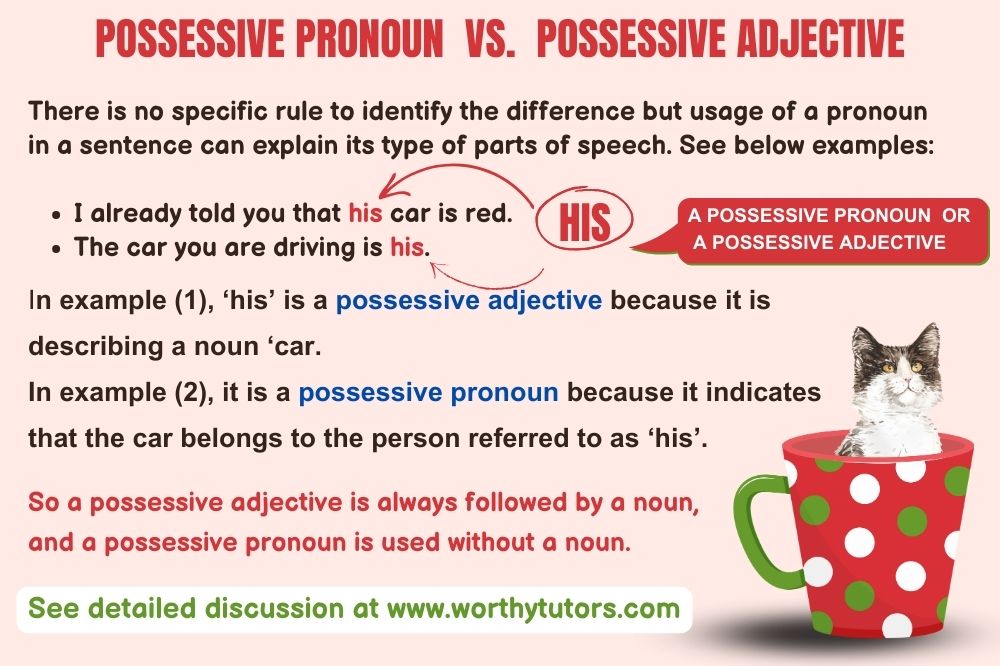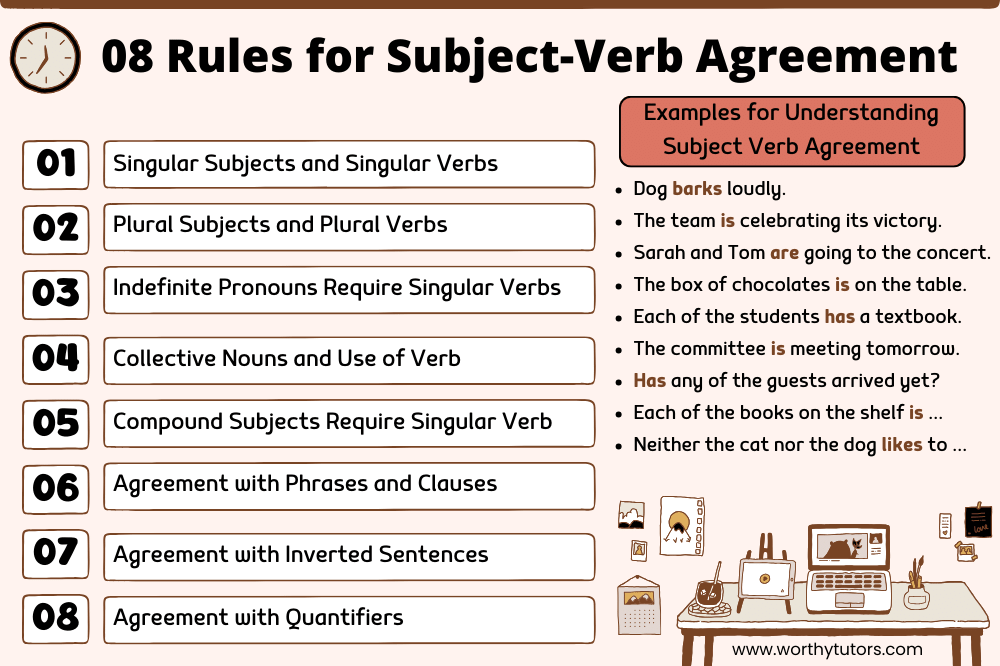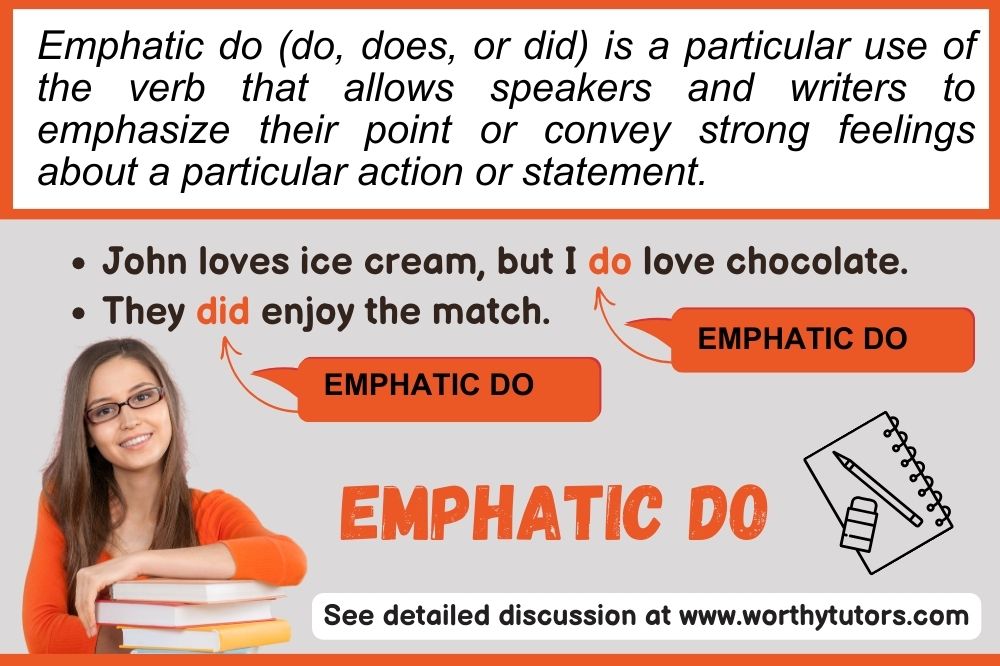
English grammar can be a difficult subject for some learners because of complex rules. One of the complex term in English grammar is distinguishing between possessive pronouns and possessive adjectives. These two sub-parts of speech are integral to specifying possession or ownership, but their roles are distinct. In this article, we will try to explain the difference between possessive pronouns and possessive adjectives, using numerous examples to make it simple for easy comprehension.
What Are Possessive Pronouns and Possessive Adjectives?
Possessive adjectives and possessive pronouns show ownership.
- The common possessive pronouns are: mine, ours, yours, his, hers, its, and theirs.
- Common possessive adjectives are: my, our, your, his, her, its, and there.
Main differences between Possessive Pronouns and possessive adjectives
Possessive adjectives accompany and modify nouns to denote possession or ownership explicitly while possessive pronouns replace nouns to indicate ownership, avoiding repetition in a sentence.
There is no specific rule to identify the difference but usage of a pronoun in a sentence can explain its type of parts of speech. See below examples:
- I already told you that his car is red.
- The car you are driving is his.
In above examples we used a pronoun ‘his’. What is it? A possessive pronoun or possessive adjective?
The word ‘his’, in example (1), is possessive adjective because it is describing a noun ‘car. In example (2), it is a possessive pronoun because it indicates that the car belongs to the person referred to as ‘his’.
So a possessive adjective is always followed by a noun a possessive pronoun is used without a noun.
Possessive Pronouns
Possessive pronouns are words that stand in for a noun while indicating possession or ownership. Instead of repeating a noun (with a possessive adjective sometimes), we employ these pronouns to avoid redundancy and create more concise and fluid sentences. Possessive pronouns simplifies the construction of a possessive adjective and a noun converting it to a possessive pronoun. But, when you are using a possessive pronoun, it should be clear that to whom possession refers to.
- That pen is your pen.
- That pen is yours.
In above examples, the word yours is replacing possessive adjective (your) and noun (pen) into a single word ‘yours’ (a possessive pronoun).
Here are more examples of possessive pronouns in sentences.
- Mine: The red bicycle is mine; the blue one is yours.
- Yours: Is this the book that is yours?
- Hers: The backpack with the unicorn design is hers.
- His: The baseball bat and glove are his for the game.
- Ours: The family picnic basket is filled with sandwiches, and it’s ours to enjoy.
- Its: “The cat is known for its agility and graceful movements.”.
- Theirs: The beautiful garden with all those flowers is theirs to maintain.
Possessive Adjectives
Possessive adjectives, on the other hand, are words used to describe a noun, specifically by indicating possession. Unlike possessive pronouns, which stand alone and replace nouns, possessive adjectives always before a noun. Like other adjectives, possessive adjectives provide information about the noun while indicating ownership or possession.
Here are the most commonly used possessive adjectives with examples in sentences:
- My: This my ticket.
- Your: I love your car for its attractive design.
- His. Are you talking about his red car?
- Her: Her black eyes bewitched me in a glance.
- Its: its color will fade under the sun.
- Our: Our exam can be delayed due to the general poll.
- Their: Are you asking about their house?
Summary
In summary, while possessive pronouns and possessive adjectives may seem similar due to their shared forms, they have distinct functions within sentences. Possessive pronouns replace nouns and demonstrate ownership, while possessive adjectives accompany nouns, explicitly indicating possession. Understanding this distinction is fundamental for effective communication and clear writing.


